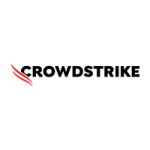I use Microsoft Sentinel in my work as an MSSP and as a threat detection engineer.
One of the most valuable features of Microsoft Sentinel is that it's cloud-based. I previously worked for a very long time with AXA since 2006, but Microsoft Sentinel's ability to scale virtually and budget-dependent is a huge advantage. Before that, everything was on-premise and required some forklift upgrades, and it was a bit of a nightmare.
Microsoft Sentinel is relatively expensive, and its cost should be improved. Although Microsoft has been working on providing additional discounts based on commitment tiers, it's still in the top three most expensive products out there. They are certainly trying to compete with the likes of Splunk.
I have been using Microsoft Sentinel since April 2020.
Since the time that I've been using Microsoft Sentinel, I've seen five or six serious outages. That's not uncommon with cloud providers. Generally, when it's a major outage, it's pretty catastrophic.
The scalability of Microsoft Sentinel is pretty good.
I have contacted Microsoft Sentinel's technical support a number of times, and my experience with them has been pretty good.
Before we started using Microsoft Sentinel, we previously used Splunk and ArcSight. Having a brand name like Microsoft was one of the reasons we decided to switch to Microsoft Sentinel. I was working for an MSSP at the time, and at the start of the service, they decided to run their MSSP based on Microsoft Sentinel. So it was more of an environmental thing than a conscious decision to switch to Microsoft Sentinel.
The deployment of Microsoft Sentinel is relatively simple, but the data onboarding is the complicated part.
Two people are required for the deployment of Microsoft Sentinel.
Microsoft Sentinel's evolution, use of CI/CD, and automation capabilities have helped us see a return on investment.
Microsoft Sentinel's pricing is relatively expensive and extremely confusing. I have raised this issue with Microsoft directly. It's not an easy thing to do, especially when you consider commitment tiers, discounts, and several variables that go along with it. It would be very difficult for the uninitiated to get a true reflection because you'd need to know about the product to get a cost. Suppose I go with the online pricing calculator. In that case, I need to know the difference between analytics and basic logs. I also need to understand the implications and limitations of selecting a particular option. And that's not clear from the pricing tool. So I think from that perspective, they should democratize it and make it a lot simpler and easier to do.
The visibility that Microsoft Sentinel provides into threats is great. They got a lot of content out of the box and have an active community. I absolutely love the cluster functionality and the cluster query language. I definitely wouldn't want to go back to anything else. It's an incredible query language.
Microsoft Sentinel helps us to prioritize threats across our entire enterprise. The out-of-the-box content and behavior-analytic functionality that Microsoft Sentinel provides certainly help a lot.
There's a whole cloud stack like Defender for Endpoint, Defender for Cloud, and Defender for Cloud Apps that we interface with. I am not directly responsible for configuring and managing those different products within my company. However, we interface with each of them because we take their log data.
It was very easy to integrate other Microsoft security products with Microsoft Sentinel. The other Microsoft products I mentioned have done a great job of making it very simple to integrate. It's probably easier than all the other services. Being Microsoft products, there's a very tight integration, which is great.
I don't have any direct involvement with configuring Defender for Cloud. However, we take the logs from all the Defender suites like Defender for Identity, Defender for Cloud, Defender for Cloud Apps, Defender for Endpoint, etc.
Microsoft Sentinel enables us to ingest data from our entire ecosystem. It is more challenging regarding the on-premise stuff and unsupported SaaS services. You could leverage the available functionality, but it's certainly not as easy as the native Microsoft Cloud products it integrates with. There's a lot more to it in terms of being able to ingest data from an on-premise data source. This data is very important to our security operations.
Microsoft Sentinel enables us to investigate threats and respond holistically from one place.
The comprehensiveness of Microsoft Sentinel security protection is good. It is constantly evolving. I would like to see Microsoft add more automation, but they're on a journey to expanding their capability. I expect to see a change in that space. Since I started using the product, it has evolved, and the evolution of the product from two years ago or three years ago has been huge.
The cost and ease of use of Microsoft Sentinel against standalone SIEM and SOAR solutions are on par with Splunk in terms of costs. It's on par with what Splunk costs or slightly cheaper. It depends on how you set it up, but it's not always evident. Microsoft would prefer you to pay more than less. Certainly, from their perspective, it could probably put out more guidance on the optimization of cost. In terms of its use and functionality, it's definitely on its way to becoming a market leader. I can see that through the evolution that occurred in the last three years. There's always more and more functionality being added. I would like to see more expansion in terms of the provision of functionality in the dashboarding and work booking component. They could spend more time on expanding our capabilities. Splunk can easily plug into D3 libraries to create really good visualizations. The visualization capability within Microsoft Sentinel at the moment is somewhat rudimentary. You can always plug Power BI into it, but it's not a native product feature, and you need to buy and pay for Power BI.
From an overall management capability, Microsoft Sentinel has certainly made life easier. The introduction and addition of the CRC process are great. Historically, many SIMS haven't had that capability or ability to be integrated with the CRC system. So the automation component of that has allowed the deployment of infrastructure's code to speed up the process of the actual deployment massively in the MSSP environment. Historically, when it was on-premise, it would take two weeks to two months to get that all done. Whereas now, you can spin up a new instance and onboard all the cloud stack within a few days, which is huge.
Microsoft Sentinel has the hunting functionality. From that perspective, you could run a whole number of queries at the same time.
Microsoft Sentinel has not helped eliminate having to look at multiple dashboards. They need to expand that functionality.
Microsoft Sentinel’s threat intelligence helps us prepare for potential threats before they hit and to take proactive steps. They’ve recently introduced the Microsoft Defender Threat Intelligence feed, which is a good step forward. It’s come out of the RiskIQ acquisition, which is great. However, I would like to see more native integrations with threat intelligence feeds from financial services, local country threat intelligence feeds, and CSC feeds from government institutions. They work quite closely with the government in many places already, and it would be a huge advantage to have really simple and easy integrations. They could do more in that space in terms of providing alternative threat intelligence with the ability to integrate seamlessly and easily with threat intelligence from other sources. They do already provide connectors, but it isn’t easy. In my experience working in the industry, I’ve seen a company that effectively had a threat intelligence marketplace built into it. So you could very easily and quickly select threat intelligence providers through a number of clicks and then onboard that data very quickly.
Microsoft Sentinel has helped us save time as opposed to our previous solution. Microsoft needs to add even more automation. If you look at their competitors like Palo Alto Cortex, they already have a lot more capability out of the box. Microsoft needs to expand further that out-of-the-box automation capability.
Based on previous experience, Microsoft Sentinel has decreased our time to detection or our time to respond.
Microsoft Sentinel does not need any maintenance because Microsoft does that. However, I have monitoring rules set in place to watch what's going on. For example, we've seen outages in the past, which caused delays in incident creation. There's very little out-of-the-box content to help monitor Microsoft Sentinel.
I would always go with a best-of-breed strategy rather than a single vendor’s security suite. The evolution of Microsoft Sentinel itself has been quite amazing to see. The solution has become more feature-rich in the last two years. I hope this evolution continues and will likely leave the others behind.
I suggest to those evaluating Microsoft Sentinel to do a proof of concept.
Overall, I rate Microsoft Sentinel a seven out of ten.














